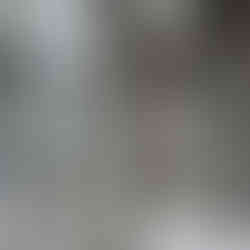
Welcome to the 39th insertion of DEMUR®, an analytical series highlighting the intricacies of the artistic world and the minutiae lying within. In this episode we look to the past, present and future to recall motifs of brutalism throughout history, and the rise of such in present day.
Brutalism, by definition, is classified as “a style of architecture or art characterized by a deliberate plainness, crudity, or violence of imagery”. In essence, the technique finds beauty in structures and mediums otherwise labeled as bland, raw or ill-mannered. Foreboding construction strips the artistry of contemporary design, instead curating minimalistic, harsh spaces, known today as brutalism.

Emerging in the 1950’s, first seen in an architectural setting, monolithic concrete structures became popularized by Reyner Banham, a historian and pioneer in the field. Banham yearned to challenge the retro style current in popular culture, using new-age, brutalist design to do so. However, ‘Cite Radieuse’, a stilted, concrete based residential is cited as the initial brutalist design, developed in the late 1940 circa.
Interior designers and architects alike dug deep into the post-world war design philosophy, as unrefined materials found a gateway into cities and wildly industrial environments. The cost effective trait these foreboding concrete structures retained drew attraction, and subsequently propelled brutalism into the mainstream.

Slowly fading into the era of peace, love and tranquility, the 1970’s exiled utilitarian structures as concrete posed one crucial flaw; longevity. The revolt against modernist design burned to ashes, but never extinguished, revived nearly four decades later alongside a massively progressive appreciation for the arts.
In present day, creatives like Rick Owens and Marcel Breuer have shot motifs of brutalism to new heights, reverberating in all corners of art. An attraction to vogue high-fashion catered to the premise, surging popularity of modest designers like Helmut Lang and the aesthetic itself. Brutalism pushes us to continuously challenge systemic beliefs, much like our predecessors.













Comments